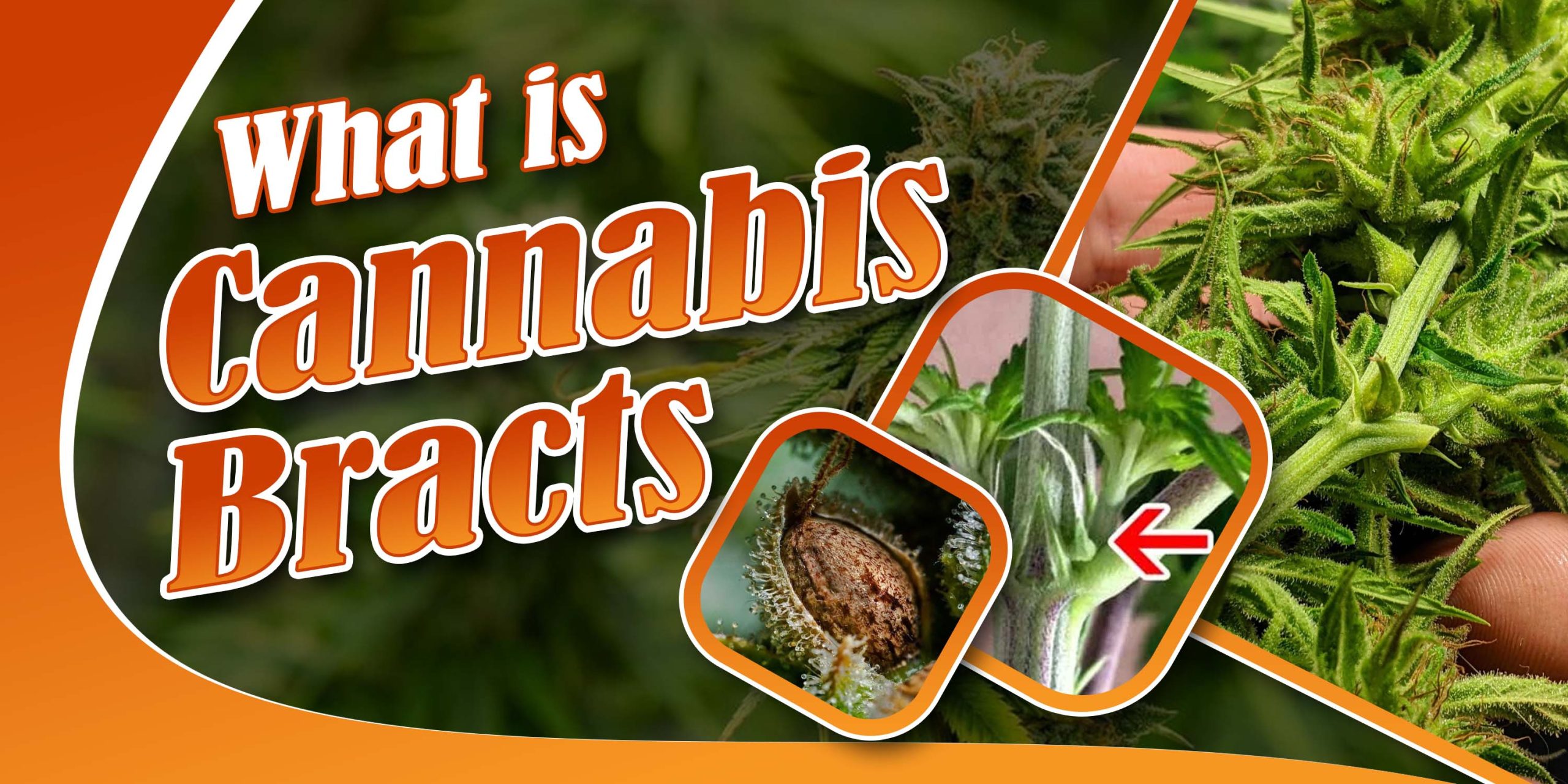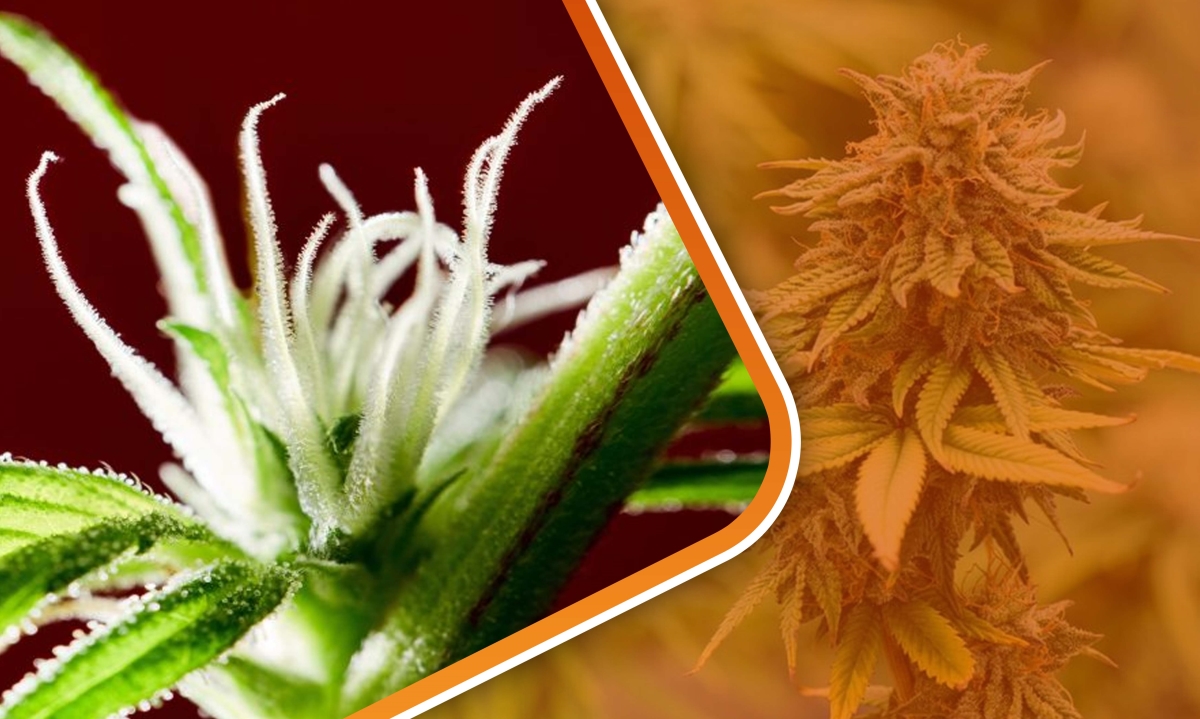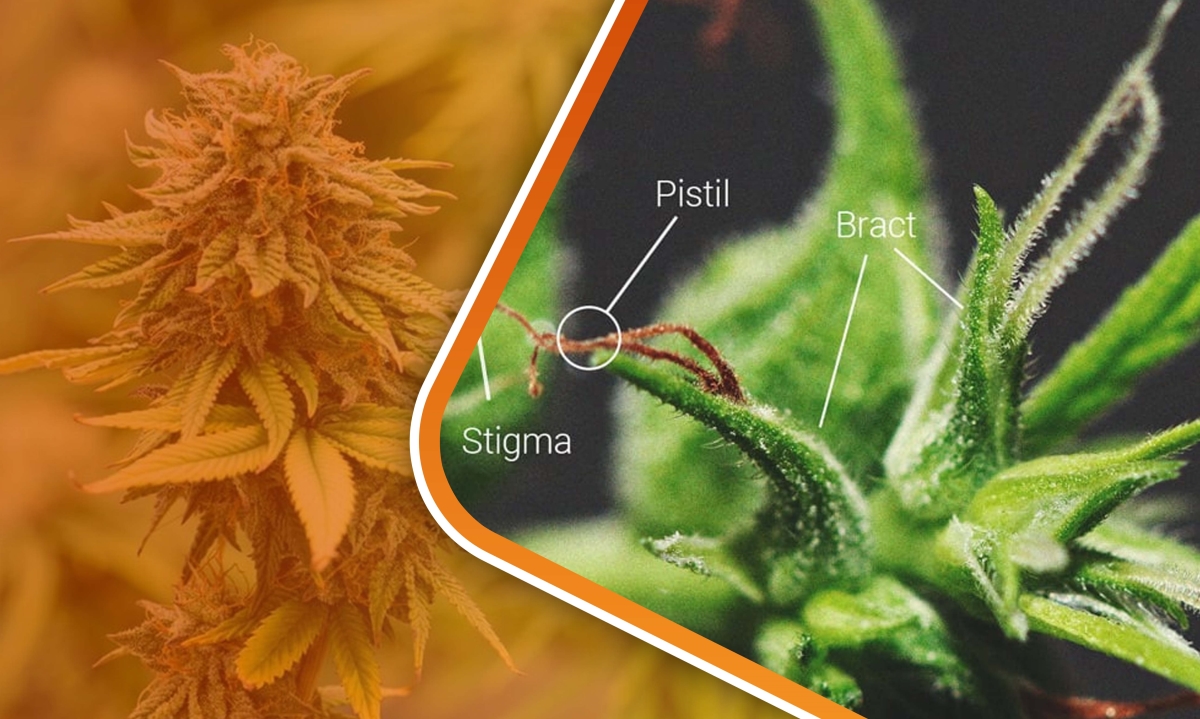
Top 10 Cannabis-Friendly Honeymoon Destinations
In our exploration of the most captivating weed-friendly honeymoon destinations
$65.00 – $240.00
$65.00 – $240.00
$65.00 – $240.00
$65.00 – $240.00
$65.00 – $240.00

Cannabis Bracts, also known as “buds”, a versatile and fascinating plant, has captivated the attention of botanists, horticulturists, and enthusiasts alike. One crucial aspect of the cannabis plant’s anatomy is the bract, a specialized leaf structure that plays a vital role in the reproductive process. In this article, we delve into the intricacies of cannabis bracts, exploring their anatomy, function, and significance.
Table of Contents
Understanding Cannabis Buds
Importance of Weed Buds
Parts of a Cannabis Bud
Nodes and Internodes:
Pistils and Calyxes:
Trichomes:
Colas:
Importance of Cannabis Bracts in Cultivation
Differentiating Females vs Male Cannabis Buds
Female Cannabis Buds
Pistils and Calyx Structure
Resin Production
Bud Development
THC and CBD Content
Male Cannabis Buds
Pollen Sacs
Less Resinous
THC and CBD Content
Sativa and Indica Cannabis Buds Differences
Appearance
Cannabinoid Profile
Effects
Medicinal Uses
Appearance
Cannabinoid Profile
Effects
Medicinal Uses
The Difference between Dense Buds vs Airy Buds
Dense Buds
Airy Buds
Effects on Potency and Quality
Cultivation Tips for Optimal Bud Density

The cannabis bract is a modified leaf that forms at the base of the female flowers, encapsulating and protecting the reproductive structures within. This protective layer is pivotal for the development and maturation of the plant’s seeds. Unlike typical leaves, bracts are more condensed and tightly packed, serving as a shield for the developing seeds.
Cannabis cultivation is an intricate process that requires a deep understanding of the plant’s anatomy. One crucial aspect of this knowledge is knowing where and how buds grow on cannabis plants. In this article, we will explore the anatomy of cannabis buds, shedding light on their development and the factors influencing their growth.
The Growth Stages:
Cannabis plants go through distinct growth stages, and understanding these stages is essential for successful cultivation. The primary stages are germination, seedling, vegetative, and flowering. It is during the flowering stage that cannabis plants produce the coveted buds.
Bud Development:
Buds, also known as flowers or colas, are the reproductive organs of the female cannabis plant. They contain the highest concentration of cannabinoids and are the sought-after component for both recreational and medicinal use. The development of buds is influenced by various factors, including genetics, light cycles, and environmental conditions.

Nodes and Internodes:
Cannabis plants exhibit a pattern of nodes and internodes along their stems. Nodes are the points where branches, leaves, and buds emerge. The internodes are the spaces between these nodes. During the flowering stage, buds form at the nodes, usually at the top of the plant.
Pistils and Calyxes:
Buds consist of pistils and calyxes. Pistils are the hair-like structures that emerge from the calyxes. These tiny hairs are the reproductive organs of the female plant and play a crucial role in capturing pollen. Calyxes, on the other hand, are small, pod-like structures that house the plant’s reproductive parts.
Trichomes:
Trichomes are resin-producing glands found on the surface of buds, leaves, and stems. These microscopic structures are responsible for producing cannabinoids, terpenes, and other compounds that give cannabis its unique properties. The trichomes give buds a sticky texture and a sparkling appearance.
Colas:
Colas refer to the cluster of buds that form at the top of the main stem and branches. These are the prime sites for bud development, containing a concentration of cannabinoids and terpenes. Proper care and environmental conditions during the flowering stage contribute to the optimal development of colas.
Understanding the anatomy and function of cannabis bracts is essential for cultivators seeking to optimize their harvests. The resinous nature of bracts contributes to the overall cannabinoid and terpene content of the plant, influencing the potency and therapeutic properties of the final product.
Moreover, the appearance and aroma of bracts can be indicative of the specific cultivar or strain. Experienced growers often use these visual and olfactory cues to identify and differentiate between various cannabis varieties.
In conclusion, cannabis bracts are a critical component of the plant’s reproductive system, serving both protective and functional roles. Their unique anatomy, resinous coating, and role in seed development make them a focal point for cultivators and enthusiasts alike. As we continue to explore and appreciate the intricacies of cannabis, a deeper understanding of bracts contributes to the overall knowledge and appreciation of this remarkable plant.
Cannabis plants exhibit sexual dimorphism, with distinct male and female plants. Understanding the differences between female and male cannabis buds is crucial for cultivators seeking to optimize their yields. In this article, we’ll explore the unique features of both genders and how they contribute to the cultivation process.
Pistils and Calyx Structure
Female cannabis plants are characterized by the presence of pistils, which are hair-like structures emerging from the calyx. The calyx is the bulbous part that houses the reproductive organs. These structures play a pivotal role in the pollination and seed production process.
Resin Production
Female cannabis buds are known for their resin production, which contains cannabinoids and terpenes responsible for the plant’s therapeutic effects. The resin acts as a defense mechanism against pests and UV radiation, making it a crucial component for the plant’s survival.
Bud Development
Female plants focus on developing large, resinous buds, as these are the primary sites for cannabinoid and terpene synthesis. Bud development is a complex process influenced by factors such as light cycles, nutrients, and environmental conditions.
THC and CBD Content
Female cannabis plants tend to have higher THC (tetrahydrocannabinol) content, the psychoactive compound responsible for the plant’s euphoric effects. However, the CBD (cannabidiol) content can also vary among female strains, contributing to the overall therapeutic profile.
Pollen Sacs
Male cannabis plants can be identified by the presence of pollen sacs, small sac-like structures that contain pollen. Pollen sacs develop within the male flowers and are crucial for fertilizing female plants, leading to seed production.
Less Resinous
Compared to females, male cannabis plants produce fewer trichomes and less resin. The energy that would be allocated to resin production is diverted towards the development of pollen sacs and flowers.
THC and CBD Content
Male cannabis plants generally have lower THC content than females. They are not typically cultivated for their psychoactive properties but rather for their role in the breeding process to create new strains.
Conclusion:
Comprehending the distinctions between male and female cannabis buds is imperative for growers seeking to maximize their growth methodologies. Male plants are essential for breeding and producing new strains, even if female plants are prized for their cannabinoid-rich buds. Growers can improve their cannabis production operations by making informed selections based on their understanding of the unique traits associated with each gender.
Cannabis lovers are frequently presented with the option of selecting between Sativa or Indica strains, as each has its own distinct effects and qualities. Knowing the structure of Sativa and Indica cannabis buds is essential to selecting the right strain based on personal tastes and experiences.
Appearance
Sativa buds are typically long and narrow with loose, fluffy structures. The plants themselves tend to grow tall and thin, with narrow leaves. Sativa buds are known for their vibrant green color and may showcase orange or red hairs.
Cannabinoid Profile
Sativa strains are often associated with higher levels of tetrahydrocannabinol (THC), the psychoactive compound responsible for the euphoric “high” associated with cannabis use. The elevated THC content in Sativa strains contributes to their energizing and uplifting effects.
Effects
Sativa strains are renowned for promoting creativity, focus, and sociability. Users often report feeling more energetic and motivated, making Sativa strains ideal for daytime use or social activities.
Medicinal Uses
Sativa strains are frequently recommended for individuals seeking relief from conditions such as depression, fatigue, and attention disorders due to their uplifting and invigorating effects.
Appearance
Indica buds are typically denser and more compact than Sativa buds. The plants themselves tend to be shorter and bushier, with broad leaves. Indica buds often showcase deep shades of green and can have purple or blue undertones.
Cannabinoid Profile
Indica strains generally have a higher cannabidiol (CBD) content compared to Sativa strains. CBD is a non-psychoactive compound known for its potential therapeutic benefits, such as relaxation and pain relief. Indica strains may still contain THC, but in lower concentrations than Sativa strains.
Effects
Indica strains are renowned for their relaxing and sedative effects on both the body and mind. Users often report a sense of calm, euphoria, and heightened sensory perception. Indica strains are typically preferred for evening or nighttime use.
Medicinal Uses
Indica strains are frequently recommended for individuals dealing with insomnia, chronic pain, anxiety, and muscle spasms due to their relaxing and calming effects.
Conclusion:
Understanding the anatomy of Sativa and Indica cannabis buds is essential for tailoring the cannabis experience to individual preferences and needs. Whether seeking an energizing boost or relaxation, knowing the key differences between Sativa and Indica strains allows users to make informed choices for a more enjoyable and personalized cannabis experience.
Cannabis enthusiasts often encounter a crucial aspect of cultivation known as bud density. The distinction between dense buds and airy buds plays a pivotal role in the overall quality and potency of the harvested flowers.
Dense Buds
Dense buds are characterized by their compact and tightly packed structure. These buds boast a higher concentration of trichomes, which are resinous glands containing cannabinoids, terpenes, and other essential compounds. The tight arrangement of plant material in dense buds contributes to a more significant overall cannabinoid content, resulting in a potent and robust smoking or vaping experience.
Airy Buds
On the flip side, airy buds are less densely packed and have a looser structure. This characteristic often results from factors such as insufficient lighting, inadequate nutrients, or genetic predisposition. While airy buds may not possess the same concentration of cannabinoids and terpenes as their dense counterparts, they can still offer a pleasant smoking experience.
Effects on Potency and Quality
The density of cannabis buds directly influences their potency and overall quality. Dense buds, rich in trichomes, deliver a more intense and flavorful experience due to their higher cannabinoid and terpene concentrations. On the other hand, airy buds, while potentially less potent, may still offer a satisfying experience, especially when cultivated and cured with care.
Cultivation Tips for Optimal Bud Density
Genetics: Choose strains known for producing dense buds.
Lighting: Ensure proper and sufficient light penetration throughout the plant canopy.
Nutrient Management: Provide the necessary nutrients, especially during the flowering stage.
Environment: Maintain optimal environmental conditions, including temperature and humidity.
Conclusion:
In the realm of cannabis cultivation, the distinction between dense buds and airy buds is critical for growers seeking to optimize the quality and potency of their harvest. By understanding the factors influencing bud density, cultivators can implement effective strategies to achieve the desired outcome. As highlighted, a combination of genetics, environmental conditions, and nutrient management plays a pivotal role in shaping the anatomy of cannabis flowers.

In our exploration of the most captivating weed-friendly honeymoon destinations
Bongs play an important role in enhancing the smoking experience.

Marijuana allergies are a topic of growing interest due to

Cannabis-infused lubricants, often called cannabis lube, have become popular recently

Are You 18 Or Over?
By clicking 'Continue', you confirm that you are over 18 years old. By using this website, you agree to our disclaimer.